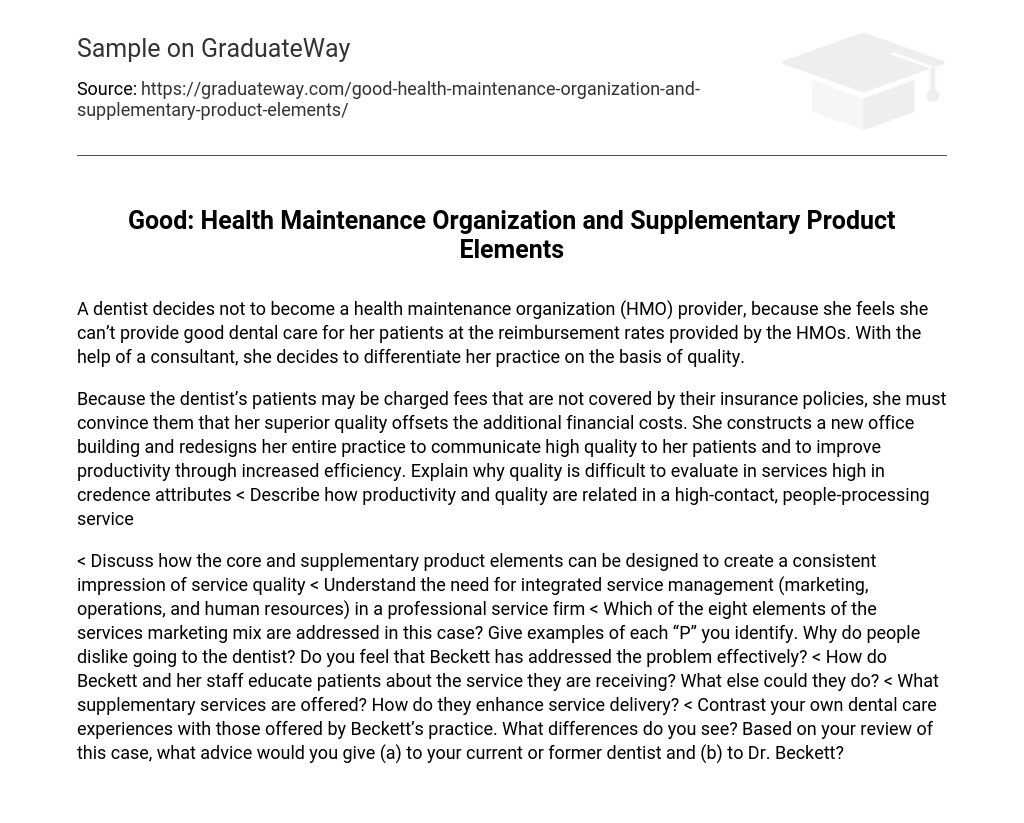A dentist decides not to become a health maintenance organization (HMO) provider, because she feels she can’t provide good dental care for her patients at the reimbursement rates provided by the HMOs. With the help of a consultant, she decides to differentiate her practice on the basis of quality.
Because the dentist’s patients may be charged fees that are not covered by their insurance policies, she must convince them that her superior quality offsets the additional financial costs. She constructs a new office building and redesigns her entire practice to communicate high quality to her patients and to improve productivity through increased efficiency. Explain why quality is difficult to evaluate in services high in credence attributes < Describe how productivity and quality are related in a high-contact, people-processing service
< Discuss how the core and supplementary product elements can be designed to create a consistent impression of service quality < Understand the need for integrated service management (marketing, operations, and human resources) in a professional service firm < Which of the eight elements of the services marketing mix are addressed in this case? Give examples of each “P” you identify. Why do people dislike going to the dentist? Do you feel that Beckett has addressed the problem effectively? < How do Beckett and her staff educate patients about the service they are receiving? What else could they do? < What supplementary services are offered? How do they enhance service delivery? < Contrast your own dental care experiences with those offered by Beckett’s practice. What differences do you see? Based on your review of this case, what advice would you give (a) to your current or former dentist and (b) to Dr. Beckett?





